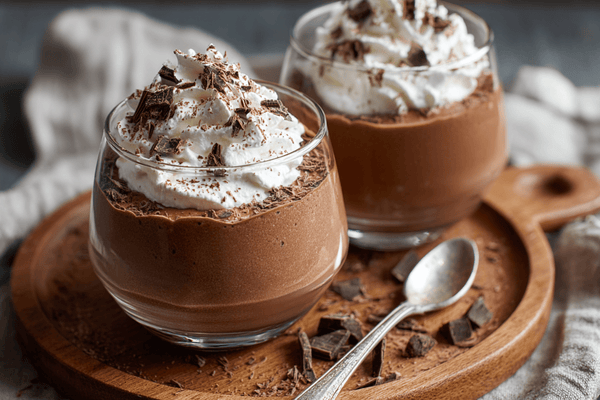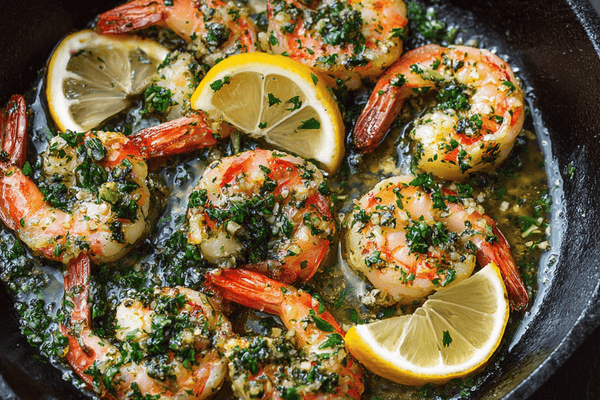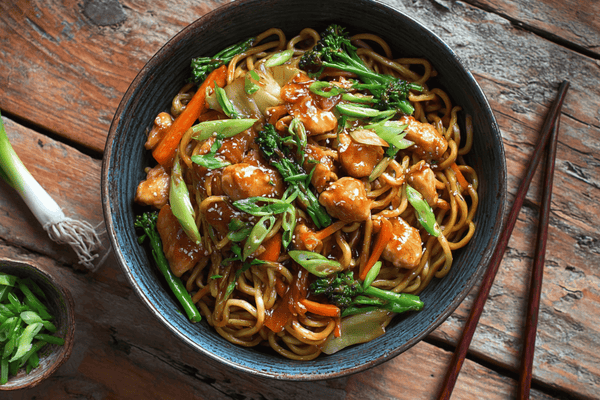
Damascus steel is a material that dates back to the early 300 - 600 A.D whilst notably being used for sword making in 1100 A.D when it was originally used for blade ware and this ancient steel-making technique is still prevalent today and can be seen most commonly in high-quality Japanese knives.
You may not have been aware of this before but whenever you see a Japanese damascus steel knife (or collection) where the blade(s) have a very specific pattern like waves or raindrops, then this is the result of them being manufactured to hold a Damascus pattern.
Damascus steel patterns are formed by welding two kinds of steel (usually a high carbon or stainless steel) in a folding and twisting manner.
There are many different techniques that can be used to form a Damascus steel pattern however all will in some way involve welding several layers of steel to form one single piece, this single piece will then hold the unique Damascus steel pattern as the finished product.
Damascus steel and pattern-welding Damascus steel are two very different things that are often confused to be the same.
With this in mind, we want to break down in this article what exactly a Damascus pattern is, how to tell the difference between a genuine and fake Damascus pattern, and also whether or not they actually serve a purpose. What makes Damascus Steel special?
Original Damascus steel patterns
Where does Damascus Steel come from? Date back to the early 300 - 600 AD. Damascus steel was originally used for blades and this ancient steel-making technique is still prevalent today, particularly in Japanese knives.
Damascus can be described as a patterned layered material made from folding, forging, welding, and hammering different types of steel together to form one solid block. This unique material has now been produced into a vast range of different products from Damascus steel folding knives, silverware, ornate guns, and fine art.
What Is Damascus Steel

Damascus steel blades were once considered the pinnacle material for a knife blade, Damascus steel is incredibly tough yet flexible and holds a very sharp edge.
Damascus steel knives can be made from a variety of steels. There are many different options today to choose from, however, steel for a Damascus Steel knife should have a high-carbon content as well as manganese and chromium.
The term "Damascus" blade is actually quite misleading as it can refer to either pattern-welded steel or layered steel.
The layered steel can either be two different types of steel layers, including both hard and soft steel, or the layering of high-carbon and low- to non-carbon steel.
There are many other factors that contribute to the overall quality of a Damascus Steel blade, however, it is important to understand that in general there are two different types of Damascus steel:
Layered steel: Which is two or more types of different steels that are forged and hammered together
Pattern-welded steel: Steel that has been combined by welding together alternating layers of hard and soft metals (and/or other materials).
With all Damascus steel knives, the blade forms a distinct pattern when it is etched.
The Damascus Steel pattern will always be in the blade but it doesn't have to be on both sides of the blade, most Damascus knives are made with one side being etched with a Damascus pattern.
These specific characteristics appeal to Japanese knives because Damascus steel was used in the 16th century to create samurai swords, a bladesmith technique, and a design that was later used to create many of the Japanese knives that are so popular today's world.
How to make Damascus Steel patterns? Damascus steel is formed when two types of metal are combined to create a design in the steel known as "Damascus" in the middle of the blade.
This technique has been used throughout history in many different areas including Damascus, Syria where it was discovered back in 300 - 600
In recent years, a high carbon steel blend has become the highest quality material for a lot of knife blades, however, Damascus steel is still seen as a very high-end material to use and the visual design offers an added benefit that other materials cannot replicate.
Do we know how to make Damascus Steel? The original Damascus steel is a material that we have not been able to recreate since the source material for its creation was lost in the 1700s and therefore when material today is referred to as Damascus steel, it is usually mistaken for pattern-welded steel (the modern equivalent of real Damascus steel)
This modern technique creates a similar watery/wavy pattern as seen in traditional Damascus steel though Damascus steel was originally formed from wootz steel and it was the method of creating wootz steel that was lost in the 1700s as mentioned above.
Wootz steel okume gane is a Japanese metalworking technique that fuses multiple layers of steel together to create a material with a wood grain appearance.
Damascus steel knives can be made from a variety of steels. There are many different options today to choose from, however, steel for a Damascus Steel knife should have a high-carbon content as well
Modern-day Damascus steel is therefore only Damascus steel by name, the process has yet to be replicated and the material we have now is better referred to as pattern-welded steel (though most people and manufacturers still refer to it as Damascus steel).
This isn’t done to deceive anyone, modern pattern-welding comes very near to mimicking the original Damascus steel, the issue only arises when cheap imitation knives are sold as Damascus steel which we will cover shortly.
How Are Damascus Patterns Formed: Damascus Steel Patterns Guide

Damascus steel patterns can be formed in a varied number of ways to create different styles and patterns. While the core fundamental is layering and welding two to several layers of steel, how this steel is then refined to create the final product is a process that can vary.
The basic process for creating a Damascus pattern is to stack/layer multiple types of steel and roll them to form a billet. This process is quite basic however the types of steel used and the techniques used to refine them will vary greatly depending on the desired outcome.
It can be common to forge hard and soft steels to create a blade that is hard and can hold a sharp edge yet, is flexible enough to be resistant to cracking or chipping. When forging material it can be easy to assume that the harder the steel, the sharper and better the knife but this can lead to brittle and delicate blades that are more prone to breaking.
This is primarily the “functional” reason why pattern-welded steel is used as a knife-making technique, the second and equally popular reason is for the patterns that can be formed on the blade when utilizing this technique.
Depending on the bladesmith, when they make Damascus Steel, different techniques can be used to either create the initial pattern (different types of steel used and how they are layered and rolled) or how best to bring out the Damascus pattern through etching or chemical use.
Why is Damascus steel layered?
Damascus steel is created by layering different types of metal and then forging the material into a billet. This process gives the finished knife several benefits, while some are functional while others are purely aesthetic.
The benefit to using multiple types of steel in this way is that it allows for different properties to be introduced into the final product, allowing the knifemaker to have a wider range of properties available at their disposal.
This is important because each type of steel has its own unique qualities including hardness, flexibility, and durability.
Do Damascus Patterns Serve a Purpose

People often wonder whether Damascus patterns serve a purpose or whether they are purely there for visual aesthetics and the answer in its 21st-century use is that it’s a combination of both.
The original Damascus steel served a very intentional purpose, the welding method was used to forge a hard yet flexible metal that could also hold a very fine edge. The eye-catching and easily distinguishable wavy/watery pattern was simply a byproduct of the welding process involving several layers of steel.
While Damascus patterns do serve a purpose, being that a true Damascus steel pattern is the after product of creating a hard and flexible metal used in very high-quality knives, some Damascus patterns are nothing more than decorative additions.
Some forms of modern Damasus steel are cheap imitations that have wavy/watery patterns etched into them and do not have the same structural quality of a true Damascus steel.
Many of these imitations can have the patterns scratched away with repeated use and don’t have solid blade integrity yet can be sold as a higher-priced item with the claim that it’s a Damascus steel blade.
Final Thoughts
Damascus patterns are a truly unique and mesmerizing design that makes Japanese knives easily distinguishable from other styles of knives from around the world.
While these Damascus patterns might look like a decorative touch, they do serve a much-needed purpose and that is to create a blade that is hard, flexible, and capable of holding a fine edge.
These features are synonymous with Japanese knives. An example of Damascus Steel can be seen with the Aiko knives, which showcase a wavy design, whilst the Riku demonstrate a feathered design.
While the original art of forming Damascus steel is yet to be replicated, modern advancements in technology have ensured that we have a very good version of Damascus steel that is as close to the original material as possible and allows for high quality (and visually appealing) knives to be manufactured.
FAQ
Q- How many different patterns of Damascus is there?
A- There are many different patterns that can be achieved when forging Damascus steel, and the exact number of patterns is difficult to determine. The patterns in Damascus steel are created by manipulating the layers of steel in the forging process, so the number of possible patterns is essentially limitless. Some common patterns that can be seen in Damascus steel include swirls, waves, and other geometric designs. Because the patterns in Damascus steel are created by the artisan forging the steel, no two pieces of Damascus steel are exactly alike, and the number of patterns that can be achieved is effectively infinite.
Q- Why is it called Damascus pattern?
A- Damascus steel is so named because the city of Damascus, in Syria, was a center of sword-making during the Middle Ages. The steel used to make these swords was known for its distinctive patterns, which were created through the forging process. The exact methods used to create these patterns were a closely guarded secret, and the swords made from Damascus steel were highly prized for their beauty and strength. Over time, the term "Damascus pattern" came to refer to the distinctive patterns seen in Damascus steel, regardless of where the steel was actually made.
Q- Does Damascus pattern fade?
A- Damascus steel is known for its durability and resistance to wear, so it is not likely to fade over time. However, like any other type of steel, it can be damaged or corroded if it is not properly cared for. To prevent Damascus steel from fading or becoming damaged, it is important to keep it clean and dry and to store it in a cool, dry place when not in use. Additionally, it is a good idea to apply a protective coating of oil or wax to the steel to help prevent corrosion. By taking these simple precautions, you can help ensure that your Damascus steel retains its beautiful patterns and remains in good condition for many years to come.
Q- Why is my Damascus blade rusting?
A- Damascus steel is not immune to rust, and like any other type of steel, it can rust if it is not properly cared for. There are several reasons why your Damascus blade may be rusting, including exposure to moisture, lack of oiling or waxing, and improper storage. To prevent rust, it is important to keep your Damascus blade clean and dry and to apply a coating of oil or wax to protect the steel from moisture. Additionally, it is important to store your blade in a cool, dry place when not in use to prevent rust from forming. If your blade is already rusty, you can remove the rust by gently rubbing it with fine steel wool or a soft cloth and applying a rust remover. Then, be sure to oil or wax the blade to prevent further rusting.


